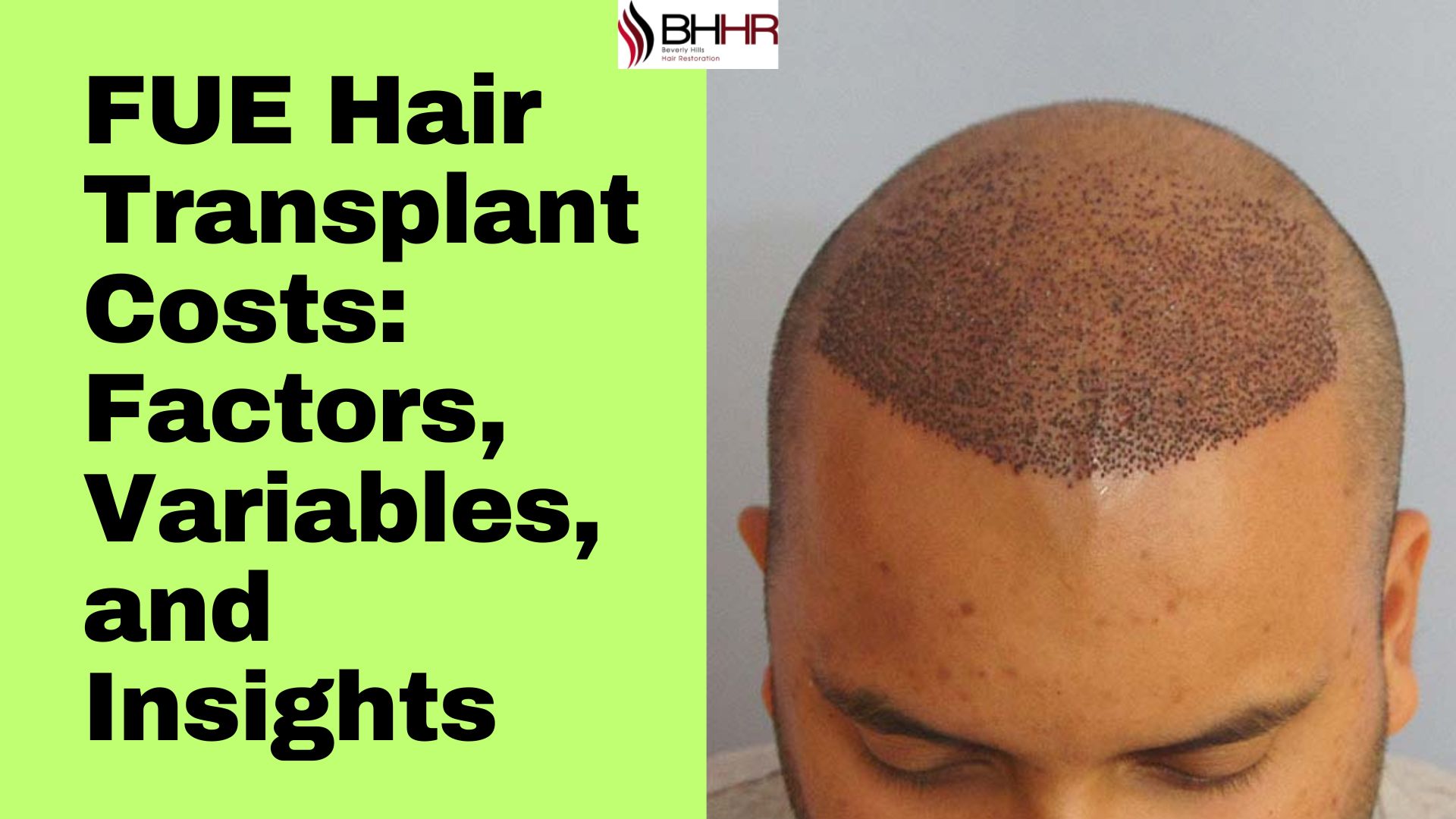When considering an FUE (Follicular Unit Extraction) hair transplant, one crucial aspect that individuals often contemplate is the cost associated with the procedure. Understanding the factors and variables influencing FUE hair transplant cost is essential for making an informed decision. In this blog post, we will delve into the key elements that affect the pricing of FUE hair transplants, providing valuable insights to help you navigate the financial aspect of this transformative procedure.
What is FUE Hair Transplant?
FUE Hair Transplant is a modern hair restoration technique that involves removing personal hair follicles from the donor place and transplanting them into the recipient area. Unlike traditional methods, such as FUT (Follicular Unit Transplantation), FUE does not require the removal of a strip of scalp. Instead, it involves extracting individual follicular units using a specialized punch tool.
Factors Affecting FUE Hair Transplant Costs:
Clinic Reputation and Expertise
The reputation and expertise of the clinic performing the FUE hair transplant play a significant role in determining the costs. Established clinics with a track record of successful procedures and satisfied clients often charge higher fees. They have experienced surgeons and a skilled team, ensuring higher quality and success rates.
Geographic Location
The geographic location of the clinic also influences the cost of FUE hair transplants. Prices may vary significantly between regions and countries due to factors such as the local economy, cost of living, and market demand for hair restoration services. Clinics in metropolitan areas or cities with a higher cost of living generally have higher prices than those in less expensive locations.
The Extent of Hair Loss and Desired Results
The extent of hair loss and the expected results directly impact the cost of an FUE hair transplant. The more expansive the hair loss, the more grafts are needed to achieve good coverage. Additionally, if the desired results involve a high density of hair or extensive coverage, it will require more time and effort from the non-surgical team, contributing to increased costs.
Donor Hair Availability and Quality
The availability and quality of the donor’s hair affect the FUE hair transplant cost. If a patient has limited donor hair or poor hair quality, the surgeon may need to extract hair from different body areas or use advanced techniques to optimize the outcome. These additional considerations and procedures can increase the overall cost of the transplant.
Technique and Technology
The technique and technology utilized during the FUE hair transplant procedure can also impact the costs. Advanced techniques, such as robotic or automated FUE procedures, may involve higher expenses due to specialized equipment and the need for skilled technicians. Utilizing cutting-edge technology can improve precision and efficiency but may cost additional.
Additional Variables to Consider:
Pre-operative Assessments and Consultations
Before undergoing an FUE hair transplant, pre-operative assessments and consultations are essential. These evaluations help determine the patient’s suitability for the procedure and provide an opportunity to discuss expectations, potential risks, and desired outcomes. The fees associated with these assessments and consultations may be included in the overall cost of the transplant.
Post-operative Care and Follow-up Visits
Post-operative care and follow-up visits contribute to the total cost of an FUE hair transplant. After the procedure, patients require proper care and monitoring to ensure optimal healing and hair growth. The cost may cover medications, dressings, and additional consultations to track progress and address concerns.
Ancillary Services and Supplementary Treatments
Some clinics offer ancillary services and supplementary treatments alongside FUE hair transplants. These may include services like scalp micropigmentation, laser therapy, or specialized hair care products. While these services can enhance the overall results and improve the patient’s experience, they may come at an extra cost.
Understanding Pricing Structures:
Cost per Graft vs. Total Procedure Cost
FUE hair transplant costs can be calculated based on the cost per graft or the total procedure cost. Cost per graft refers to the price charged for each hair follicle transplant. In contrast, the total procedure cost encompasses the overall expenses, including consultation fees, post-operative care, and additional services. Understanding the pricing structure helps patients evaluate the cost-effectiveness of different options and make an informed decision.
Financing Options and Insurance Coverage
Financing options are available for individuals seeking FUE hair transplants. Many clinics offer payment plans or partnerships with financial institutions to assist patients in managing the cost over time. It’s essential to inquire about these options and evaluate their feasibility. Additionally, insurance coverage for hair restoration procedures varies, and it’s advisable to check with insurance providers to determine if any coverage is available.
Making an Informed Decision:
When considering FUE hair transplant costs, it’s crucial to assess the overall value and align it with personal needs and budget. Apart from the financial aspect, evaluating the reputation of clinics, the non-surgical team’s expertise, and the potential long-term benefits are essential. By conducting thorough research, consulting with experts, and weighing the cost against quality and expertise, individuals can make an informed decision that aligns with their goals and financial capabilities.
Conclusion:
Deciding to undergo an FUE hair transplant is a significant step towards regaining confidence and restoring hair. By understanding the factors, variables, and insights surrounding FUE hair transplant costs, you can make an informed decision that aligns with your needs and budget. Remember to research reputable clinics thoroughly, consult with experts, and carefully weigh the financial aspects alongside the potential benefits.

